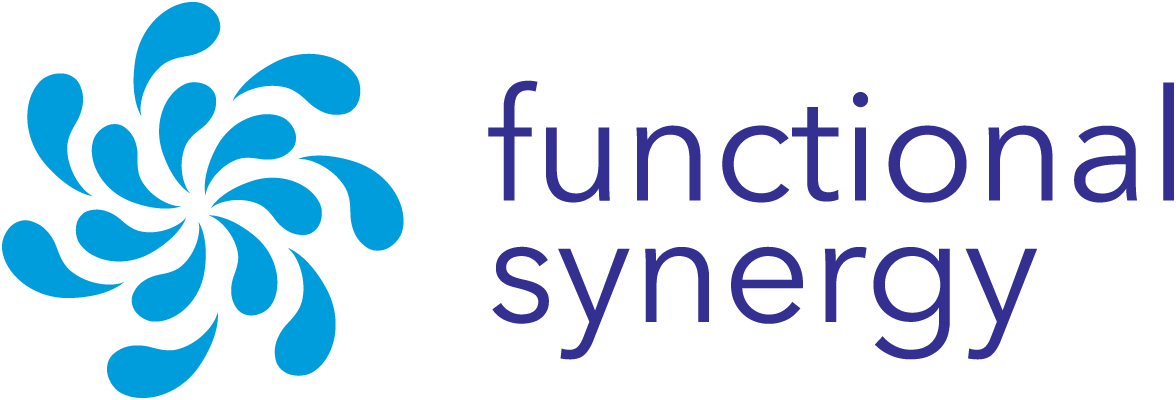Intro 00:00:01 You’re listening to From Pain to Possibility with Susi Hately. You will hear Susie’s best ideas on how to reduce or even eradicate your pain and learn how to listen to your body when it whispers so you don’t have to hear it scream. And now here’s your host, Susi Hately.
Susi 00:00:22 Welcome and welcome back. I’m really glad that you’re here today, because today’s episode is one of those deeper dives, not just in how pain shows up, but into why it might be showing up and what it might be trying to say and how your response to it could really change everything. If you’ve been managing a persistent symptom, perhaps a pain in your back or in your jaw, tightness in your gut, your chest, even persistent flares from something like psoriasis, then this episode is for you. Because what if the thing that keeps grabbing your attention isn’t actually the problem? What if it’s the invitation? What if that tension. Is your body asking to be re-met? Re-listened to? Re-understood? And most importantly, what if the very act of listening to your body is what brings safety and clarity to your mind? Let’s begin with naming the symptom and start with what’s here.
Susi 00:01:24 Your body. Your attention. Your symptom. What part of your body always lets you know when you have hit your limit or gone past it? Is it in your neck, your gut, your back, your breath, your jaw, your migraine, your psoriasis? Whatever it is. This is what I like to call your attention anchor. The place in your body that speaks up first when your system needs support or redirection. It’s not a malfunction, but rather it’s a message. And true, we often think of symptoms as interruptions. Things we need to fix so we can get on with it. But what if the symptom was not an interruption, but rather it was the way in? Which leads to this idea of a symptom as a strategy. Here’s a truth that’s really changed so much for me and the people that I work with. Your most persistent symptoms aren’t malfunctions. They’re not even interruptions. They’re strategies that gut tension. It might be doing the work of scanning the environment for danger. And sure, even if it’s scanning, even after the danger has passed, it doesn’t matter.
Susi 00:02:47 It’s still scanning the environment. That shoulder bracing that might be holding weight. You didn’t realize that you were carrying the chronic fatigue. It might be the system downshifting after a long time of being on alert or being wired. And these are just examples. I’m not suggesting that that’s happening at all with the symptoms that you’re experiencing, whether they’re in the gut, the shoulder, or the persistent fatigue or really any symptom that you’re having. The idea here that I’m really wanting to bring forth is the body doesn’t forget, it protects and it protects until something safer shows up. So when we’re trying to outthink or override our symptoms, we’re often trying to reason with a system that doesn’t speak in logic, doesn’t speak with the left side of our brain per se. It speaks in sensation. And the more we work with the body, with breath, and with precision, load and support, the safer the whole system feels and the quieter the mind becomes because the body gets a chance to tell the mind, hey, we’re okay now.
Susi 00:04:04 We’re okay here. Here’s a phase of this process that’s rarely taught. It’s the pause before the reassignment. It’s the middle. So you’ve named the symptom, but it’s that place before trying to change it. So often people experience a symptom and they just want to get rid of it. But I’m talking about that space before even attempting to do that, because you might not even have to. Let me give an example. How often does that experience in your body come up and you just want to stretch it away, to deal with it, to get rid of it, to get adjusted, to get whatever in order to get rid of it. What I’m offering here is to not do any of that, but rather to simply be with it. It’s this pause which can certainly be uncomfortable at times, And it’s also where clarity arises, where the breath slows, and there is an opportunity for your system to start to reorganize itself, not because you forced it, but because you gave it space.
Susi 00:05:26 You said, by pausing, I see you. I hear you. I’m listening now. I’m not managing, not escaping. I’m just listening. And in that listening, the nervous system begins to update because the brain has received new input. By not going after trying to fix right away. To stretch it out. Those old outputs start to shift bit by bit, whether it’s pain, grittiness, Tightness, hypervigilance, autoimmune flares. They start to shift in quality. They might even begin to fade. But not from suppression. Not from force, but from the medicine called presence. Listening. Spaciousness. So now what you’ve softened as a result of listening and of being, as a result of the pause, you’ve seen more clearly the old role. Your symptom was plain, what your symptom was asking of you. Now you get to give that energy a new job. And this part is really essential because the energy doesn’t disappear. It redirects. What if that tension in your belly is actually a seed of your focus? What if the tightness in your shoulder holds a spark of creativity? What if the fatigue is an old fire that’s ready to burn clean? These are just ideas.
Susi 00:07:35 My point is, we don’t want to shame the symptom. We don’t want to shame the energy. We want to work with it, to redirect it and reassign it because it’s trying to get our attention. It’s asking to be creative. And when we give it something to do, it supports your current reality, not your old survival. And in the act of doing this, your system and your symptoms will say thank you. I’ve been waiting for this. This is where the physical meets the practical. When we shift out of force and into precision, into a deliberateness, and when we do, the nervous system says, yes. yes. There’s that ease that starts to bubble up and aliveness that starts to show itself. Because when we cue with clarity, with deliberateness, not too much, not too vague. Our body and mind knows how to respond, and we see it happen over and over again in decreasing pain. How load distributes and is absorbed, just in a very different, perhaps nuanced way.
Susi 00:09:02 The breath moves deeper quite naturally. Patterns begin to reorganize on their own. There’s a responsiveness in our system rather than a gripping or a bracing. We don’t have to be as willful with what muscle is doing what, because there’s a more refined organization. It’s like an orchestra. And all the pieces, all the instruments are coming on board together. More melodic. Now, if you’ve taken my courses in the past, you know that this is what happens, whether it’s in the power of the glutes or in the power of the rotator cuff, even the power of the tongue, the pits, those processes, those programs are meant to allow for this to happen, to allow you to feel deeper, to connect to those whispers, to have your symptoms be heard, because we’re not trying to give the right cue. At least that’s not what I’m trying to do, but rather to see what’s actually happening instead of overriding. Because when we move away from a binary black and white. Right or wrong, but rather just see what’s happening in Q from there, that’s when the mind stops buzzing.
Susi 00:10:22 That’s when stillness feels safe. That’s when change really becomes sustainable. Let’s name this clearly. Growth can feel like a threat. Even healing can feel like a lot. Why? Because in the process of growth and healing, your body is no longer functioning on old coping strategies. It’s now organizing around presence. So yes, symptoms might flare. Tension might return. But now you meet it very, very differently. Not with a panic. Not with management, but with leadership. You say things like, I don’t need to collapse. I don’t need to rush. I don’t need to fix this instantly to be safe. Your nervous system becomes the stable ground. And your mind? There’s an opportunity to really deeply trust you again, because this is the real capacity. Not because you’re doing more, but because you’re doing what you’re doing. Coherently connected. And there’s this easeful thread through it all. So how does this show up in the moment you feel yourself about to grab food, to soothe that pause before rushing through? Sending an email, perhaps the seconds before that jaw tightens because you can feel the whispers of it tightening.
Susi 00:12:05 You feel the energy with someone who used to trigger you. It shows up just before your child begins to melt down because you can see so much more clearly and be with such presence and its presence, not performative. It also shows up when perhaps an old thought, I’ll never figure this out. When that thought arises and you feel your feet on the floor and realize, Actually, I already am. You won’t always get it perfect because you don’t need to. Because as I’ve said so many times, healing isn’t linear, and having nervous system coherence and connection and clarity doesn’t mean you’ll never, ever wobble. It means you’ll know how to come home to yourself again and again and again. And that’s what the body has to teach the mind. And that’s why we start here with the body because the body is the entry point to clarity, to leadership. To a deeper, truer kind of relief. You don’t need to wait for the perfect moment. You don’t need to force your body to calm down. You simply start with what’s here now.
Susi 00:13:40 And you listen. You realign. You can trust yourself to lead by listening. By being and by giving space. That’s where your power lies. Have a great time exploring this. We’ll see you next time.







